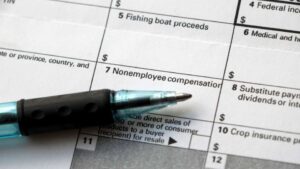The new 1099-NEC tax form reports any form of non-employee compensation. You need to know how it works, as well as the adjustments made to the 1099-MISC form.
In the past, people used the 1099-MISC to report certain payments to the IRS. The beginning of the 2020 tax year, however, saw a redesign of the 1099-MISC form. Below is everything you need to know about the 1099-NEC tax form.
History of Non-Employee Compensation
In the 1983 tax year, the Internal Revenue Service got rid of the 1099-NEC form. It started using Form 1099-MISC for non-employee compensation filing. This form became a catchall for different forms of miscellaneous income, such as fishing boat proceeds, royalties, rents, and non-employee payments. This format of reporting existed for the next three decades.
In the 2017 tax year, the IRS revised the filing deadlines for tax form with non-employee payments to Jan. 31. All other payments, however, if filed on paper, continued to be due by Feb. 28. If filed electronically, they were due on March 31. These multiple filing deadlines created a lot of confusion and complexity for both filers and software vendors. This is why the IRS redrafted the decommissioned Form 1099-NEC.
Overview of Form 1099-NEC
It is, in reality, an old form that people have been using since 1982. They have been using it to report any payments non-employees received from a company. The IRS, however, separated the reporting of compensation to non-employees and redesigned the form for the 2020 tax year. Companies will no longer have to report non-employee payments on Form 1099-MISC. Examples of such payments include monies paid to independent contractors.
To report a payment as non-employee compensation, companies or employers need to consider certain conditions. These include:
- Whether they made the payments to certain people or businesses amounting to at least $600 during the year.
- Whether they made the payments to people who are not employees.
- Whether they made the payments to an estate, a partnership, an individual, or, in certain cases, a corporation.
- Whether they made the payments for services received in the course of their business or trade.
Examples of Non-Employee Compensation
Different forms of payments fall under the category of non-employee compensation. These include payments for professional services such as accountants and lawyers and payments to independent contractors. They also include commissions paid to salespersons subject to repayment but not repaid during the tax year. Employers, therefore, need to provide the 1099-NEC tax form to the payee. They also need to file with the IRS by Feb. 1, 2021. This is because Jan. 31, 2020, falls on a Sunday.
People Who Should Use Form 1099-NEC
All businesses should file this tax form if they meet the conditions outlined above. They must also file the form for individuals from whom they withheld federal income tax for any amount under backup withholding rules. However, you should not use the 1099-NEC tax form to report personal payments. You should only use it to report payments if you are in a business or trading for profit.
To get the 1099-NEC tax form, you simply need to visit the Internal Revenue Service website and download it. People could also order paper copies from the IRS. The National Distribution Center, however, closed in September 2020 until further notice. Therefore, at the moment, you should download the online copy.
